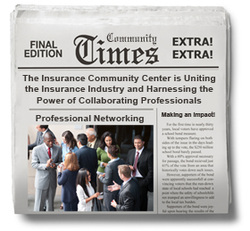|
Car batteries have varying life spans that depend on where you live, what type of battery you have and more. Get your battery checked out at each oil change, and test it once a year after the three-year mark. It’s also important to know the signs of a dying battery so you don’t end up stuck somewhere with a car that won’t start. Keep reading to understand the factors that can shorten or extend your battery life, as well as what to consider when it’s time for a new battery. What factors affect the life of a car battery?
What are the signs that a battery needs to be replaced? Have your battery tested immediately if you notice:
How to Select a New Battery You should replace your old battery with an identical model. Be sure to look for:
Want to discuss your car insurance policy? Reach out for assistance.
0 Comments
.
Keeping your vehicle in good condition is essential to your safety. Plus, a well-maintained car can help you save money in the long run. That’s why it’s important to get regular service for your vehicle, such as inspections, oil changes and tire rotations. But you should also know the signs that something may be wrong — when it’s time for a professional to look at your car for anything beyond regular maintenance.
Reach out if you have any questions about car care or your auto policy. Your car is made up of a number of different parts, and like any well-oiled machine, every part needs to be in tip-top shape to run smoothly. If one part starts to fail, it could affect how the whole car runs. There are a number of things you should do to help keep your car maintained, but do you know why performing certain regular maintenance checks on your car is important? From monitoring fluid levels to testing brakes, understanding your car’s needs can help you identify potential issues.
Monitor Car Fluid Levels Cars rely on a number of fluids to help keep them running properly. While you may turn to your mechanic during routine maintenance visits, it’s a good idea to perform your own checks in between car inspections. Here’s a roundup of some car fluids to keep an eye on in case they run low, or else they could result in your vehicle not functioning properly.
Check Your Tire Pressure and Alignment If you ever expect to make it from Point A to Point B, you can’t over- or underestimate the amount of air your tires need. Tire pressure that is too high or too low could affect your car’s cornering, braking and stability. When you have high tire pressure, less of the tire touches the ground, affecting your car’s traction and stopping distance. Low tire pressure means more of the tire touches the road; the tires could wear out more quickly and the risk of your tires overheating could increase due to friction against the ground. Check your owner’s manual to determine the recommended tire pressure for your car. It is also important to check your tire alignment to ensure your vehicle’s suspension is performing properly. Bad tire alignment can cause your car to veer toward one direction or even result in vibrations while driving. If you notice your car has uneven tread wear, your vehicle pulls to one side over another, your straightened steering wheel appears off center or you experience vibration through your steering wheel, you should take your car to a service technician. Perform Routine Brake Checks Depending on where your morning commute takes you, driving in areas that feature more stop lights and stop signs could mean you are stepping on the brakes more often than if you normally take the highway. Your brakes are a hydraulic system made up of a set of pads that squeeze together when prompted, and run on brake fluid. If the pads wear too thin, it makes it harder to slow or stop. Your car likely has a service light that would turn on when it’s time to check your brakes, but don’t just rely on that technology; if you see any leaking fluids, notice how thick or thin your pads have become or hear a grinding sound, it may be time to replace your brakes. As a car owner, it is your responsibility to regularly maintain your car like you would any other type of property you own. If you ignore your car, it could put your safety at risk. It's appealing to buy a new car that looks great and is fun to drive, but it also pays to look beneath the surface for features that make your vehicle safe to drive and affordable to insure.
Car insurance costs are based, in part, on the model's safety history, the cost of vehicle repair or replacement, and the likelihood that the car will be stolen. Many insurers offer discounts for vehicles with features that reduce the risk of accidents and injuries. Here are five tips to consider when shopping for a new car: 1. Find Out the Cost of Insurance Your insurance rates typically change when you acquire a new vehicle. Before you choose a model, the nonprofit Insurance Information Institute recommends that you ask your insurance rep how much it will cost to insure.1 If you choose a sporty model that attracts buyers who enjoy driving fast, it will likely cost more to insure. If the car you pick is very expensive, it will be costly to repair or replace, and that will drive up insurance costs. A model that's often targeted by car thieves may also cost more to insure. 2. Look for Safety Technology One of the best things about buying a new car is all the new devices that have been developed in recent years to help drivers avoid accidents. Advanced safety features can include:
3. Consider Vehicle Design and Size Design characteristics are important when choosing a new car. Larger and heavier vehicles typically sustain less damage in auto crashes than small cars. Some small utility vehicles and pickups are prone to rollover accidents. In addition to considering size, look for cars that have “crashworthy" designs. These cars have strong “safety cages," the section of the vehicle that protects the occupants. Make sure that the front and rear ends are “crush zones" that can absorb the impact of crashes. You can look up car safety rankings by using the Insurance Institute for Highway Safety's online safety rankings tool. 4. Get Pre-Approved for a Car Loan it is recommended that you get pre-approved for a car loan before you begin shopping for a new car. Check with several lenders to get the lowest interest rate. Once you have loan approval, you'll know how much you can afford to spend. You'll also have an interest rate you can use to compare with those offered by the new car dealer's financing. In some cases, the dealer may offer the best financing deal. Before you begin shopping for a loan, gather documents to verify your income and the balances of any debts you may have. 5. Negotiate the Best Price A good negotiator usually can get a better deal than someone who simply agrees to pay what the dealer is asking. Dealers may price their cars higher than the amount they actually expect to receive in preparation for negotiations. If you take time to research prices online before you visit a dealership, you'll have a better idea of what a competitively priced car should cost. Often, the best time to buy is during end-of-the-year sales, when dealers need to make room for newer models, notes the Las Vegas Review-Journal. Negotiate the actual price of the car rather than the monthly payment. Focusing on payments makes it easy to lose sight of the full amount you'll be paying over time, says Autotrader. If you can't get the price you want, don't be afraid to walk away. Remember there's always another car. Unfortunately, car break-ins happen, but you can take steps to minimize your risk and keep your vehicle and belongings safe.
By taking a few minutes to review these tips now, you could avoid the hassle of repairing (or replacing) your car later. Here are 10 smart ways to keep your vehicle safe from theft. Don’t Make a Break-In Easy
Plan Ahead (Even in Your Neighborhood)
Hide What’s Important
What to Do After a Crime If you’re the victim of a vehicle break-in or theft, take photos of the damage, file a police report and reach out for help filing an insurance claim. We can also help you be more proactive. Get in touch to learn about additional coverage for your vehicle or home. Technology has helped to change auto theft in significant ways. Engine immobilizers, audible alarms and vehicle recovery systems have made cars harder to steal and easier to recover. Today’s thefts are often the product of opportunity, with would-be thieves looking for unsuspecting drivers who leave their cars unattended. While motor vehicle theft rates have declined 42% over the past decade,¹ a car is still stolen every 44 seconds in the United States.² Between 40-50% of thefts are due to driver error,³ including doors that are left unlocked or keys that are left in plain sight. In order to help protect your vehicle from a crime of opportunity, you need to take some preliminary steps to slow down any potential thieves. Try to avoid parking in places where a thief will have time to bypass the ignition system. And even if you are running a quick errand, always lock and set the alarm on your car. Be sure to bring inviting items, including your keys, phone, GPS, laptop, and wallet with you, or stow them out of sight. Stow Valuables Before You Park Many thieves watch parking lots looking for people who leave valuables in their cars. Stow valuables out of sight before you park so not to attract the attention of thieves. Park in Plain Sight Always remember to park your car in a safe and visible location. Thieves will act even in broad daylight if they can find cover. Look for well-lit areas and open, unblocked spaces when you park. Do Not Leave Your Vehicle Unattended While Idling Even if you are just making a brief stop, always take your keys with you. Thieves tend to frequent convenience store parking lots and gas stations, where people may leave their cars running and keys in the ignition. During cold weather, it might be tempting to let your vehicle idle to warm up. This makes an inviting target for car thieves. Hide All Electronic Cords Avoid unintentional visual tips for thieves, which include leaving chargers for phones and gadgets as well as holsters for navigational equipment in plain sight. Take Precautions and Make Tracing Your Car Easier When leaving your car, lock all doors, roll up the windows and remove the keys. If you have one, activate the alarm and set the parking brake. Install wheel locks to prevent theft of wheels and tires. Consider an after-market steering wheel/brake lock if you are in a high-crime area. Having your vehicle’s VIN etched on all windows can also help deter thieves. If You Believe Your Car was Stolen:
We never expect to get in a car accident. And even though accidents are common, they feel like a big deal when they happen to us.
It’s natural to experience shock, anger, fear and other emotions in the moment and after the fact. But, preparing in advance can help make a collision more manageable. If you're ever involved in a car accident, taking these six steps can help you better handle the experience. Step 1: Make sure no one is hurt. Call 911 if you, another driver, any passengers or any bystanders need immediate medical attention. Step 2: Keep everyone safe. The accident scene can be a hazard for other drivers. If the collision is minor, move the vehicles to the side of the road or the nearest parking lot. If the accident is major, carefully exit your car and walk to a safe place. Step 3: Call the police. Ideally, law enforcement will come to the scene quickly and take an official report. However, the local police department may not have the resources to respond to a minor accident, in which case you can file a police report yourself later. Step 4: Gather necessary information. Use your phone's camera or a pen and paper to note the other driver's name, address, phone number and insurance information. Record the other vehicle's license plate, vehicle identification number, make and model. Step 5: Document the accident. Take photos, videos and voice recordings to capture vehicle damage, road conditions and any details you remember about the events leading up to the crash. Step 6: File a claim. Get in touch as soon as possible to get your claim started. We can work to get your car repaired or replaced and minimize the disruption to your life. Reach out if you have questions about your accident coverage or anything else. Car insurance is a necessary expense for many people, and there are a variety of ways to save on this household cost once you know what it takes. To get started, gather your personal information, determine your budget and then consider the insurance coverage that you think will best safeguard you and your lifestyle.
Here are 10 ways to save on your car insurance: 1. Gather Specifics About Your Car and Its Primary Drivers One way to begin the process of shopping for car insurance to get the most value for your money is to gather all of the information an insurance carrier needs to offer you the best possible rate.1 Start by compiling this basic information before you shop for quotes:
With this information, an insurance carrier can suggest the best coverage and rates for you and your lifestyle. 2. Research How Much Car Insurance Costs Before You Buy or Lease When you buy or lease a car, it can be tempting to get a brand-new car or trade in your practical family vehicle for a sports car. Just keep in mind that the type of car you drive may impact your insurance coverage and rate. Be sure to check the cost of insurance before you finalize your car purchase or lease. Insurance rates may vary widely depending on the type of car, repair costs, safety record and many other subjective points.2 3. Research All Car Insurance Coverage Requirements Each state has specific requirements for car insurance coverage.3 Coverage may become more complicated when a financial institution owns the vehicle you drive, so if you’re taking out a loan to make the car purchase, keep in mind that the lender may require you to have specific insurance that might otherwise be optional.4 One example is collision insurance that pays for the repairs of damage to your car sustained during an accident. Another example is comprehensive coverage, which typically covers the loss of the car for theft, fire and other damage due to non-accidents. Find out what coverage you need and the cost before you buy or lease. 4. Decide What Additional Coverage You Need It may seem counter-intuitive but buying additional car insurance coverage may save you money. Weighing the options for additional coverage will help you to ensure you are well protected. Consider how your finances might be impacted if you're involved in an accident, and the injuries or damages exceed the amount covered by insurance. You purchase car insurance to help protect against the potential costs of a theft or accident, so be sure to talk to your insurance agent or carrier for professional guidance on the appropriate level of coverage for you. In addition, there are other coverage options that may save you money. What if your financed car is totaled? Can you afford to pay the entire loan? In this case, you may want to consider GAP insurance, which covers the difference between what your vehicle is currently worth, which is what your standard insurance typically will pay, and the amount you owe on it. Again, your insurance agent or carrier can help guide you through the available options. 5. Save Money with Accident Forgiveness Having a clean driving record is one thing that typically can help you to qualify for lower premiums. But there are times when even a good driver can have an accident. You may want to consider looking into potential savings through Accident Forgiveness and Minor Violation Forgiveness, if available in your state. These optional features can help you avoid a premium increase following your first covered accident or minor violation. There are also other features that can help provide peace of mind, such as Decreasing Deductible and a Total Loss Deductible Waiver. Ask your insurance agent about these plans, if you fit the bill as being a responsible driver because of your good driving record. Some carriers – in select states – also offer a program that uses smartphone technology to capture and score driving behavior of drivers covered on your policy, which could result in savings both in your first term and at renewal. It’s another option to explore when you’re a good driver and looking to save on your car insurance. 6. Determine What Car Insurance You May Not Need If you own an older car and are looking to trim your expenses, you may consider dropping collision and comprehensive coverage. You’ll want to consider how much your older car is worth when you consider the cost of your premium including collision and comprehensive coverage. Be sure to also consider your individual driving situation to base your cost-cutting efforts on all the factors that could help you determine if this is a wise choice for you. With an older car, you may be paying premiums that total more than your car's value. Typically, if your car is worth less than 10 times the insurance premium, it may not be cost effective to keep that part of your coverage. 7. Life Cycle Events Can Save Car Insurance Costs One thing you can count on is that life will sometimes bring changes in your lifestyle and circumstances, so it’s smart to consider how these changes may or could affect your car insurance costs. For example, did your child go away to school? Perhaps there’s a Student Away at School discount you can explore. Did you buy a home? Maybe you can explore a Multi-Policy Discount and get the benefit of bundling your policies. These are some of the events that may help lower your car insurance rate. It’s a good idea to notify your car insurance agent when you have a major life event such as these, to have a conversation to ensure you’ve got the best coverage for your current life needs. 8. Choose the Deductible That Is Right for You Your car insurance deductible is the amount you’ll pay out of pocket before your insurance kicks in. The lower the deductible, the less you’ll pay out of pocket if an accident occurs. Selecting a higher deductible may lower your car insurance premiums. For example, if you choose a $1,000 deductible and have an accident causing $2,000 in damage, you would pay the first $1,000 of a covered loss before insurance kicks in. 9. Compare Car Insurance Companies and Costs With many things we buy nowadays there are choices. Many of us wouldn't think of buying a product or service without comparing prices, the value you get for your money, and the reputation of the provider. You may want to consider using the same philosophy when you purchase car insurance. Do your homework and then talk to your insurance agent or carrier about what your needs are.8 10. Ask Your Agent About Available Discounts It’s a good practice to check in with your insurance agent at least annually to find out if you are eligible for a better car insurance rate. You may receive discounts if you bundle coverage, such as buying insurance for your home and car from the same company. As mentioned earlier, safe driving records and extra safety features on a car may also lower rates. Ask your insurance agent about any new offerings or gaps in your coverage to determine the best coverage for you. Now that you’ve got some ideas on how to save on your car insurance, you may want to check with your carrier to review your coverage. Maybe you’ve heard that people who drive red cars get pulled over more, so insurers charge them higher rates. Or that if you let someone else drive your car, their policy will cover an accident.
Well, when it comes to auto insurance, you shouldn’t always believe what you hear. Get the facts about common car insurance myths, and reach out to make sure you have the coverage you need. Myth #1: A ticket automatically increases your rate. A moving violation doesn't have to increase your insurance rate unless it's a frequent occurrence. You may be able to take a driving course to maintain your rate and even pay less for your ticket. Myth #2: Car color affects your insurance rate. The truth is that the color of your vehicle most likely doesn’t affect your premiums. However, there are special cases where color can raise the value of your car — like a custom paint job — which could potentially increase your rates. Myth #3: Older cars need less coverage. If you don't have a loan on your car, you may not have to carry comprehensive and collision coverage, only the liability coverage required by the state. But you may not want to drop or lower your optional coverage if your car still has significant value, as it would be pricey to repair or replace. Myth #4: Someone borrowing your vehicle is covered by their own insurance. Laws vary by state, but usually the insurance covers the vehicle. Before you drive someone else's car, verify that it's insured. Don't assume that your own policy will cover an accident. Myth #5: You only need the auto liability insurance that's required by law. It's smart to buy more than the minimum, because personal liability for an at-fault auto accident can be expensive. Adding a personal umbrella policy for additional coverage can be a wise decision, especially when you have assets to protect. Get in touch today with any questions you have about your policy. How clean is your car? If you don’t wash it regularly, you could end up with costly maintenance and safety issues.
You might occasionally run your vehicle through a car wash. But there are benefits to doing the job yourself — including preserving the paint and being able to get into every nook and cranny. Ready to get started? Follow these five tips to wash your car thoroughly and correctly.
|
better Insurance
|
-
HOME
- Send me a Home Insurance Quote >
- FLOOD Insurance, Massachusetts >
- Cape Cod Home Insurance
- Pay Your Home Insurance Bill Online
- Ordinance or Law Coverage
- How to Prevent a Claim on your Home Insurance Policy
- Videos - Cape Cod Real Estate Tips >
- Cape Cod Massachusetts Arbella Insurance Discounts
- Cape Cod Massachusetts Lloyds of London Home Insurance
- Safety Insurance Discounts for Cape Cod, Massachusetts
- MPIUA - MA Property Insurance Underwriting Association "Fair Plan"
- Cape Cod Massachusetts Home Protection Insurance
- Hurricane Preparedness >
-
AUTO
- Send me an Auto Insurance Quote for Cape Cod, Massachusetts
- BOAT Insurance >
- Cape Cod, MA Dept. of Motor Vehicles
- Cape Cod Massachusetts - Report an Auto Insurance Claim
- Auto Insurance Quote - CAR BUYING TIPS : Auto Insurance for Cape Cod, MA
- InControl Driver Training
- Car Insurance for Cape Cod Massachusetts - Arbella Insurance - Send me an Auto Quote >
- Plymouth Rock - Send me an Auto Quote >
- Encompass Insurance Discounts
- Safety Insurance - Send me an Auto Quote >
- Travelers Insurance Discounts
- Progressive Insurance - Send me an Auto Quote
- LIFE
- OFFICES
- ABOUT US
- Stay Home
- Home Insurance Explained
- Agent Login
- Privacy Policy
- Videos - Cape Cod Real Estate Investing, Taxes & Insurance
- Videos - Cape Cod Coastal Real Estate
- Português
Arthur D. Calfee Insurance Agency, Inc. is a friendly local insurance agency proudly offering Massachusetts, Cape Cod and the Islands. A-Excellent AM Best rating, A+ Excellent by the BBB
Using innovative thinking, cutting-edge tools and expert resources at national and local levels, we deliver the best possible outcome on every policy we manage. Need Home Insurance? Easy, Fast, & Secure Home Insurance. Get Free Quotes 100% Online Now! Available 24/7. Affordable Rates. Cover Your Biggest Investments. Get a homeowners insurance quote, find coverage options. We'll help you understand and customize the right home insurance coverage for you.
Home is where your heart is—along with a healthy chunk of your net worth. Get started today with a free homeowner's quote.
Compare home insurance quotes today and save on protection for your biggest investment. Build a Custom Policy & Make the Switch! Our local underwriting professionals focus exclusively on finding the best home insurance, homeowner's insurance, hazard insurance, investment property insurance, flood insurance, flood zone information, vacation home insurance, second home insurance, auto insurance, collector car insurance, business insurance, general liability insurance, property insurance, professional liability insurance, contractor's liability insurance, worker's comp insurance, key man insurance, whole life insurance, term life insurance, group or personal disability, & long-term care insurance policies to patrons in the following Cape Cod, Massachusetts towns, communities and villages: Barnstable, Bourne, Pocasset, Brewster, Buzzards Bay, Centerville, Chatham, Cotuit, Craigville, Dennis, East Dennis, Eastham, Falmouth, East Falmouth, Hatchville, West Falmouth, North Falmouth, Woods Hole, Harwich, Hyannis, Hyannisport, Martha's Vineyard, Nantucket, Marstons Mills, Mashpee, Orleans, Osterville, Provincetown, Sandwich, Sagamore, Sagamore Beach, Truro, Wellfleet, Yarmouth, and Yarmouthport. Real-Time Pricing. Insurance coverage: Wind Damage, Fire Loss, Water Damage. Protect your home and belongings. Low Rates For Your Best Options to Save Money On Great Coverage! Get a quote today. Home insurance helps protect your house and your family.
Using innovative thinking, cutting-edge tools and expert resources at national and local levels, we deliver the best possible outcome on every policy we manage. Need Home Insurance? Easy, Fast, & Secure Home Insurance. Get Free Quotes 100% Online Now! Available 24/7. Affordable Rates. Cover Your Biggest Investments. Get a homeowners insurance quote, find coverage options. We'll help you understand and customize the right home insurance coverage for you.
Home is where your heart is—along with a healthy chunk of your net worth. Get started today with a free homeowner's quote.
Compare home insurance quotes today and save on protection for your biggest investment. Build a Custom Policy & Make the Switch! Our local underwriting professionals focus exclusively on finding the best home insurance, homeowner's insurance, hazard insurance, investment property insurance, flood insurance, flood zone information, vacation home insurance, second home insurance, auto insurance, collector car insurance, business insurance, general liability insurance, property insurance, professional liability insurance, contractor's liability insurance, worker's comp insurance, key man insurance, whole life insurance, term life insurance, group or personal disability, & long-term care insurance policies to patrons in the following Cape Cod, Massachusetts towns, communities and villages: Barnstable, Bourne, Pocasset, Brewster, Buzzards Bay, Centerville, Chatham, Cotuit, Craigville, Dennis, East Dennis, Eastham, Falmouth, East Falmouth, Hatchville, West Falmouth, North Falmouth, Woods Hole, Harwich, Hyannis, Hyannisport, Martha's Vineyard, Nantucket, Marstons Mills, Mashpee, Orleans, Osterville, Provincetown, Sandwich, Sagamore, Sagamore Beach, Truro, Wellfleet, Yarmouth, and Yarmouthport. Real-Time Pricing. Insurance coverage: Wind Damage, Fire Loss, Water Damage. Protect your home and belongings. Low Rates For Your Best Options to Save Money On Great Coverage! Get a quote today. Home insurance helps protect your house and your family.
Testimonials & Endorsements for the Best Insurance Agent on Cape Cod, MA
PHONE: (800) 479-2601 CUSTOMER SUPPORT & SERVICE
Please note: The above is meant as general information to help you understand the different aspects of insurance. This information is not an insurance policy, does not refer to any specific insurance policy, and does not modify any provisions, limitations, or exclusions expressly stated in any insurance policy. Descriptions of all coverages and other features on this page are necessarily brief; in order to fully understand the coverages and other features of a specific insurance policy, we encourage you to read the applicable policy and/or speak to an insurance representative. Coverages and other features vary between insurers, vary by state, and are not available in all states. Whether an accident or other loss is covered is subject to the terms and conditions of the actual insurance policy or policies involved in the claim. References to average or typical premiums, amounts of losses, deductibles, costs of coverages/repair, etc., are illustrative and may not apply to your situation. We are not responsible for the content of any third-party sites linked from this page.
© 2023 Copyright, Arthur D. Calfee Insurance Agency, Inc.
Calfee Cares.® Privacy Policy
Calfee Cares.® Privacy Policy



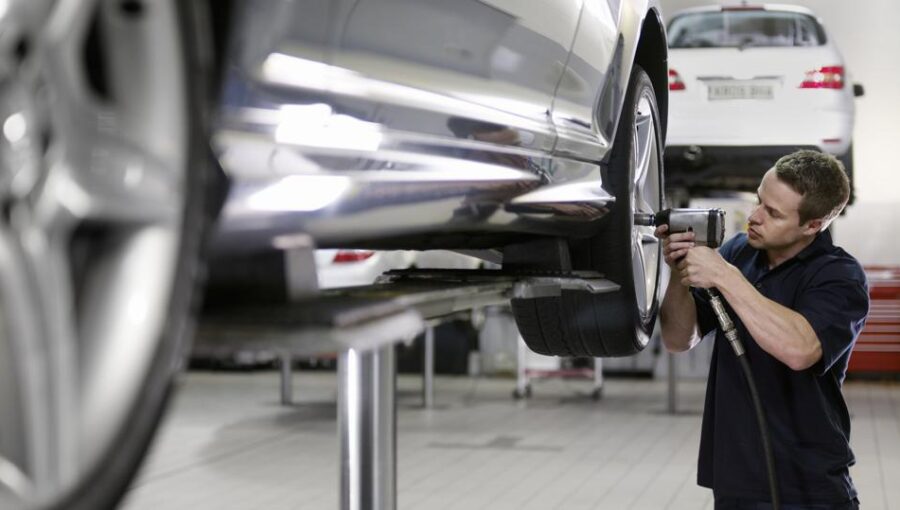
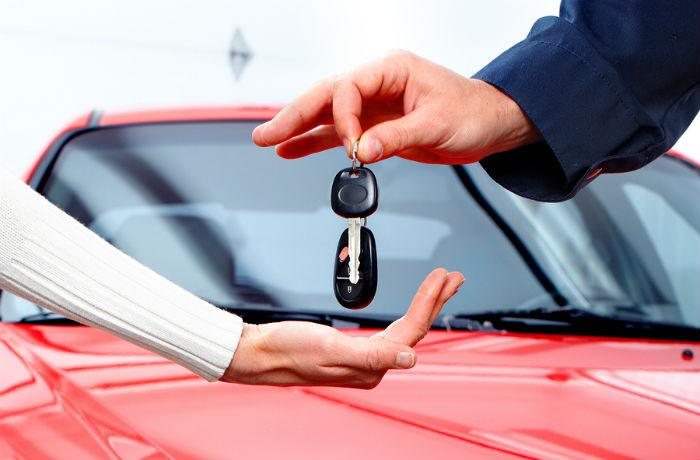

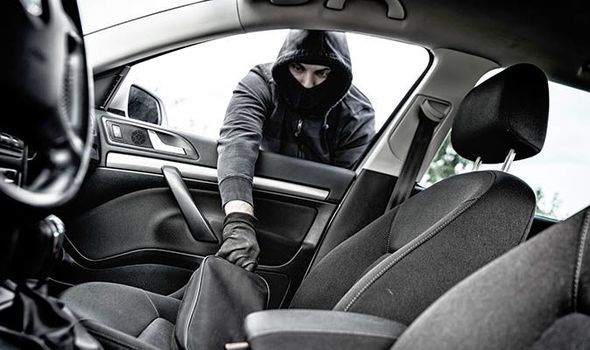
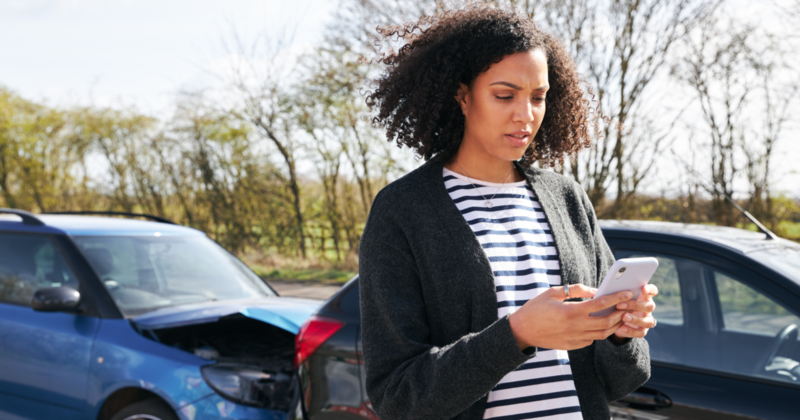
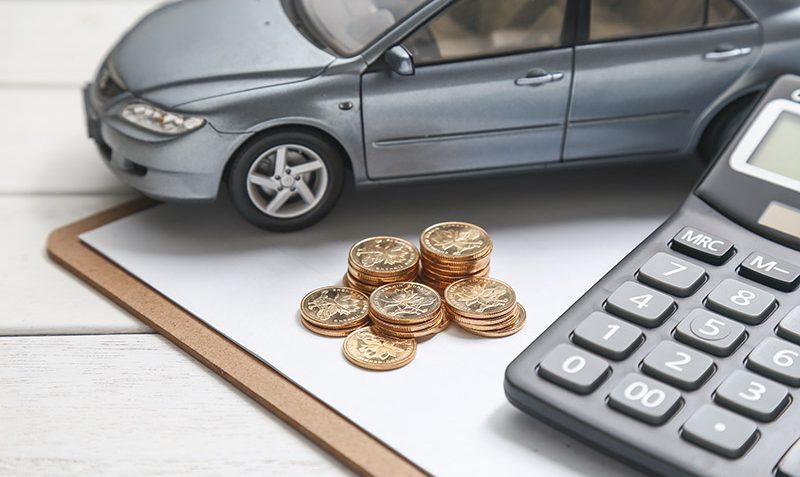
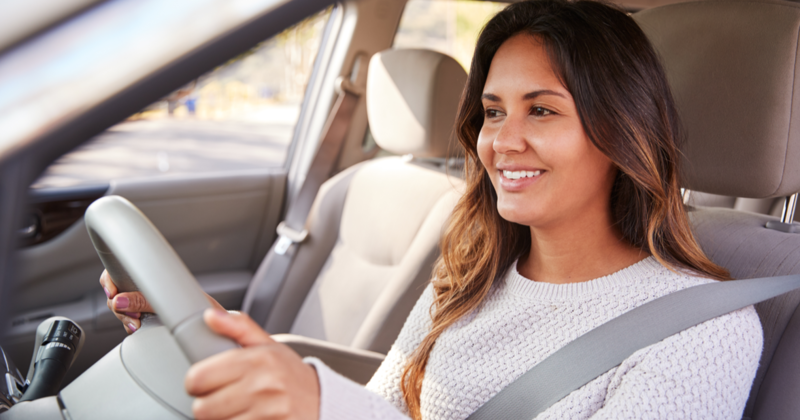


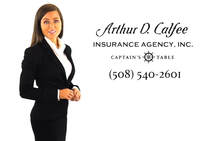



 RSS Feed
RSS Feed








